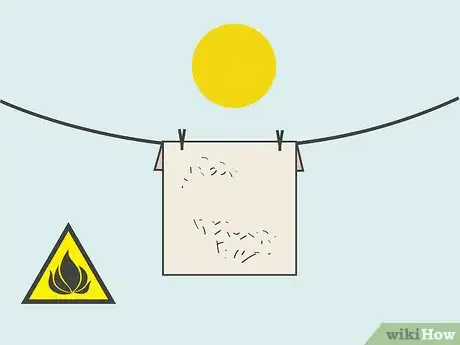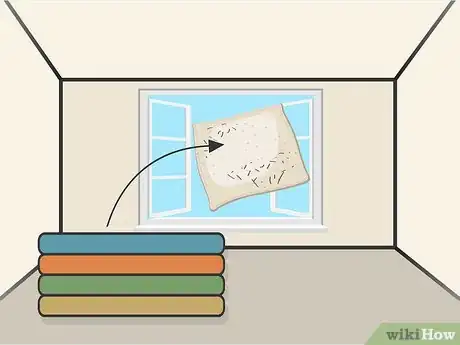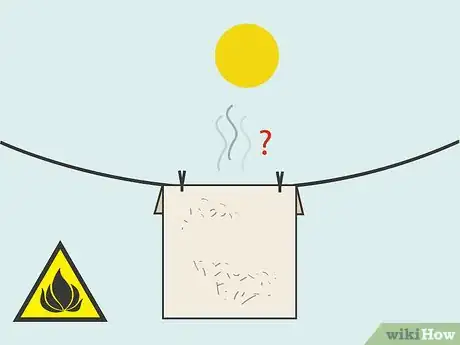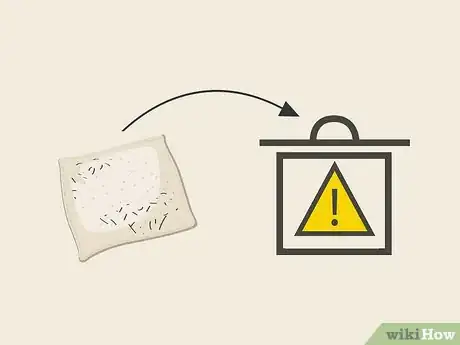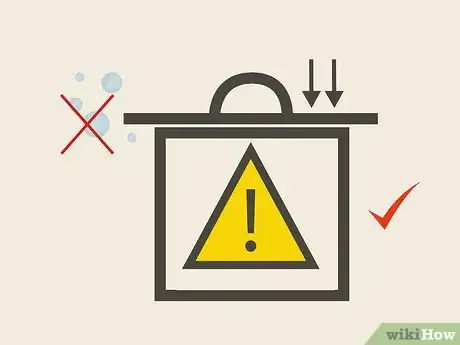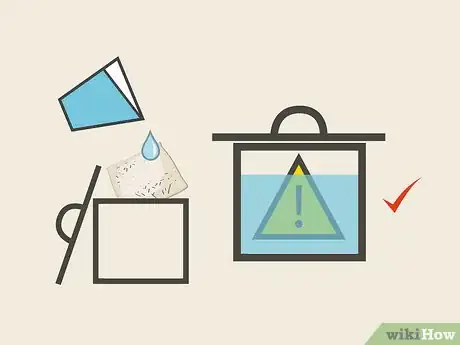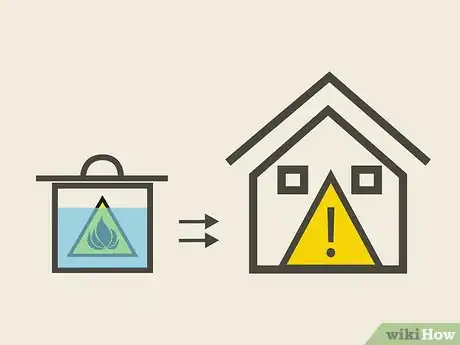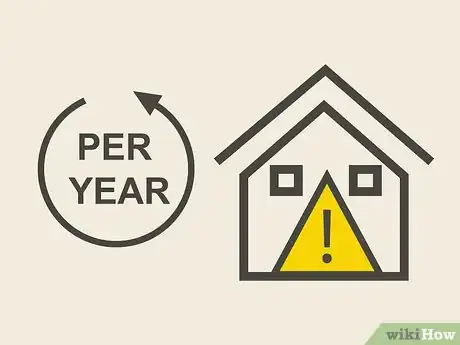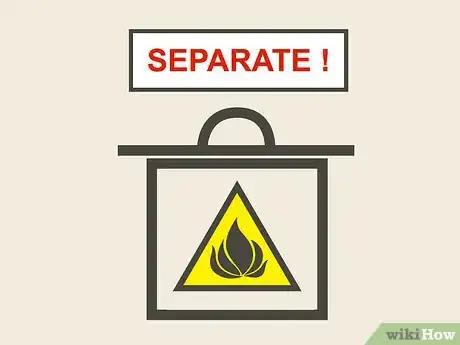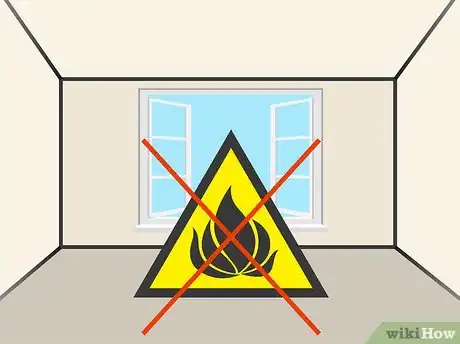This article was co-authored by Gregory Cade, JD. Gregory Cade is an Environmental and Occupational Law Attorney. With over 25 years of experience, he has extensive knowledge in injuries resulting from toxic substance exposure like pesticides. He is a member of numerous professional organizations, including The American Bar Association, The National Association of Environmental Professionals, and The American Association for Justice. Gregory graduated with a BS in Natural Science and Mathematics with an emphasis in Chemistry and Biology and an MPH in Occupational Health, Safety, and Industrial Hygiene from The University of Alabama at Birmingham. He also holds a JD from Miles School of Law.
This article has been viewed 19,217 times.
If you use a rag to clean up a substance like kitchen oils, automotive oil or fuel, paint, or solvents, the rag can then become a fire hazard. Luckily, we can help can handle these rags safely by sharing the proper way to store and get rid of them.
Steps
Airing Out the Rags
-
1Air out the rags. Before you store or discard a flammable rag, you should let it air out. This helps chemicals and vapors that can catch fire evaporate. Place them somewhere that a person or animal can’t accidentally come across them.
-
2Set the rag out flat with no other rags. You should never pile flammable rags together, even if you are airing them out. Instead, either hang them on something outside to dry, or spread them flat on a surface. This helps make sure they air out properly.[1]
- If you spread out the rags on a surface, place something like a rock on the edges to make sure they don’t blow away.
- Generally, the rag is fully aired out if it is hard and brittle.
Advertisement -
3Leave the rags until they are dry or don’t smell anymore. It’s important to make sure that the rags fully air out before you do anything with them. Let them air out until you can’t smell the flammable oil or fuel on them. If they are wet, make sure they are completely dry before you dispose of them.[2]
Storing the Rags
-
1Use an approved container. You can dispose of or store your flammable rags in a container that has been approved by a testing laboratory as safe for storing flammable objects. These containers are usually made from metal. They have a cap that will pop open if vapor builds inside so it can escape instead of combusting.[3]
- You can use any container that has been approved to hold flammable contents.[4] Manufacturers sell containers made specifically for the safe disposal of flammable rags.
-
2Use an airtight container. If you did a house project, like painting a room, you may not have an approved container. If you don’t have an approved container, you can place your flammable rags in an airtight, metal container. The smaller, the better. Make sure it has a lid that fits tightly.[5]
- For example, you can use an old paint can.
-
3Cover the rags with water. After placing the rags in the container, cover it with water and oil breakdown detergent. Don’t add anything else to the can that might be flammable.[6]
Disposing of Flammable Rags
-
1Dispose of flammable rags during hazardous waste days. To completely dispose of your rags, take them in your safe container to your community’s hazardous waste collection day. Most communities host these events once or twice each year. They will dispose of the rags properly for you.[7]
- If your town doesn’t hold one of these events, look for the nearest city or community that does.
-
2Find a facility that accepts hazardous waste year round. In many communities, there are hazardous waste collection centers or facilities that will dispose of it for you.[8] Some centers will dispose of it for free for you, while others will charge a fee.[9]
- Call waste management facilities or do an internet search for your area for facilities that will get rid of flammable rags for you.
- Not all waste management facilities will dispose of all hazardous materials. Once you find a hazardous waste disposal facility, contact them to see if they will dispose of your rags.
-
3Refrain from throwing them away. You should never place flammable rags in a trashcan and send them off to a regular trash collector or landfill. Since flammable contents are considered hazardous waste, they should be disposed of by someone who deals with hazardous waste.[10]
-
4Avoid leaving your flammable rags lying around your home. Rags can become flammable through many different substances that people use around the house. Paint, oils, and fuel can all cause a rag to become flammable.[11] If you use a rag that contains any flammable substance, don’t just leave it on the floor, in an attic, or in a garage. This can be a fire hazard.[12]
- All that a flammable rag would need is heat and oxygen to ignite. Hot attics or garages may be an environment that can lead to a fire.
References
- ↑ http://www.finewoodworking.com/2009/05/08/how-to-safely-and-not-so-safely-dispose-of-oil-soaked-rags
- ↑ http://www.mass.gov/eopss/agencies/dfs/osfm/pubed/fs-topics/disposal-of-oily-rags.html
- ↑ https://www.ccohs.ca/oshanswers/prevention/flammable_general.html
- ↑ Gregory Cade, JD. Environmental & Occupational Law Attorney. Expert Interview. 13 October 2021.
- ↑ http://www.mass.gov/eopss/agencies/dfs/osfm/pubed/fs-topics/disposal-of-oily-rags.html
- ↑ http://www.mass.gov/eopss/agencies/dfs/osfm/pubed/fs-topics/disposal-of-oily-rags.html
- ↑ http://www.finewoodworking.com/2009/05/08/how-to-safely-and-not-so-safely-dispose-of-oil-soaked-rags
- ↑ Gregory Cade, JD. Environmental & Occupational Law Attorney. Expert Interview. 13 October 2021.
- ↑ http://www.mass.gov/eea/agencies/massdep/recycle/hazardous/household-hazardous-waste-collection-facilities.html
- ↑ http://www.ituabsorbtech.com/how-to-manage-used-rags-and-absorbents-a-federal-and-state-guide/
- ↑ Gregory Cade, JD. Environmental & Occupational Law Attorney. Expert Interview. 13 October 2021.
- ↑ http://www.mass.gov/eopss/agencies/dfs/osfm/pubed/fs-topics/disposal-of-oily-rags.html
